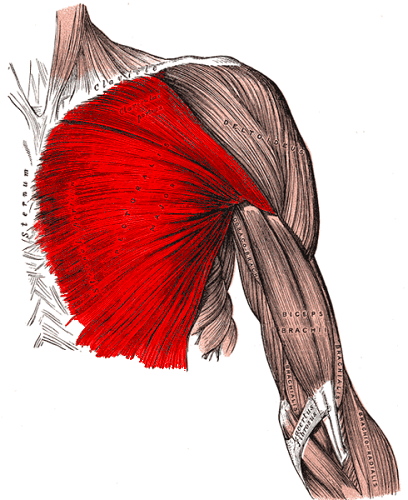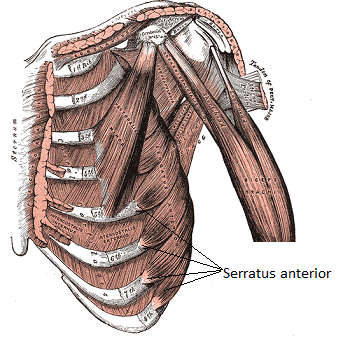Some links in this article are affiliate links, which means I earn from qualifying purchases.
You have minimal equipment, but you still want to get in an amazing upper body workout.
You have only one set of dumbbells and the floor, but you want to get a good chest pump.
Don’t worry! This is completely doable. You do not need expensive, state of the art equipment to make muscle gains.
All you need is a set of dumbbells and a floor or yoga ball.
The 12 best dumbbell chest exercises without a bench are:
- 1Dumbbell Floor Chest Press
- 2Reverse Dumbbell Floor Chest Press
- 3Standing Dumbbell Chest Press
- 4Dumbbell Push Ups
- 5Decline Dumbbell Push Ups
- 6Dumbbell T Press
- 7Svend Press
- 8Yoga Ball Dumbbell Chest Press
- 9Yoga Ball Dumbbell Chest Flys
- 10Yoga Ball Dumbbell Pull Overs
- 11Standing Upward Chest Fly
- 12Cross Body Dumbbell Raise
If you’re looking for some dumbbell chest exercises without a bench, I’m going to give you 12 exercises that you can add in to your workout.
Anatomy And Functions Of The Chest
The chest wall consists of skin, fat, muscle and bone. It is a vital area of the body as it houses organs such as the heart, lungs, liver, and trachea. The chest also provides upper body and enables correct breathing.
The predominant muscles in the chest are the pectoralis major and pectoralis minor.
Pectoralis Major
Pectoralis Major

The pectoral region also contains the serratus anterior and subclavius.
Serratus Anterior

Subclavius
What Makes A Good Dumbbell Chest Exercise Without A Bench?
A good alternative to a conventional bench-based chest exercise is one that targets the same muscles. A dumbbell chest exercise performed without a bench can be just as effective if it activates the pectoralis major and minor, and stimulates hypertrophy in these muscles.
When you can overload the exercise, you are able to make strength gains. This is definitely the case with dumbbell chest exercises that you don’t need a bench for.
12 Best Dumbbell Chest Exercises Without A Bench
Here is a list of dumbbell chest exercise that can be done without a bench. All of these exercises require a set of dumbbells and either the floor or a yoga ball. They are all simple and easy to set up, but very effective to stimulate muscle growth and strength gains.
1. Dumbbell Floor Chest Press
This exercise mimics the bench dumbbell chest press closely. In fact, it’s literally the same exercise, just without the bench.
It’s super simple, making it perfect for beginners, but there is a limited range of motion compared to a traditional bench dumbbell chest press.
Step By Step Instructions
Coach's Tips
2. Reverse Dumbbell Floor Chest Press
This movement is the same as the first exercise, but instead of using an overhand grip, you use an underhand grip.
You'll notice different muscle activation here. Specifically the inner and upper chest will feel different with this movement.
Step By Step Instructions
Coach's Tips
3. Standing Dumbbell Chest Press
The standing dumbbell chest press only requires one dumbbell and targets not only your chest muscles, but also your core.
Once again, you can really feel the inside portion of your chest on fire here. Choosing a lighter weight will allow you to functionally feel the movement better.
Step By Step Instructions
Coach's Tips
4. Dumbbell Push Ups
The push up is a staple bodyweight chest exercise.
Dumbbell push ups are a great exercise if you struggle with wrist mobility, as it removes the extreme wrist extension needed for traditional push ups.
Step By Step Instructions
Coach's Tips
5. Decline Dumbbell Push Ups
Decline dumbbell push ups are more challenging than traditional dumbbell push ups. The extra pull of gravity means you have to work harder to push yourself back up during each rep.
The decline push up also increases upper chest activation, using a higher bench will target different muscles here.
Step By Step Instructions
Coach's Tips
6. Dumbbell T Press
This exercise combines push ups with a twisting movement. For this reason, it requires a lot of core strength and stamina.
You will probably have to significantly lower the weight due to the unique unilateral nature of the exercise
Step By Step Instructions
Coach's Tips
7. Svend Press
The svend press is a lesser known chest exercise that doesn’t require a bench.
It challenges the chest muscles in a unique way compared to more popular dumbbell exercises like the chest press or chest flyes. As it is performed standing, it also engages the core and leg muscles.
Step By Step Instructions
Coach's Tips
8. Yoga Ball Dumbbell Chest Press
The yoga ball is great to switch up any exercise. It requires you to have more balance and control compared to a bench.
The dumbbell chest press can be done using a yoga ball if you do not have a bench available.
Step By Step Instructions
Coach's Tips
9. Yoga Ball Dumbbell Chest Flys
The yoga ball can also be used to do dumbbell chest flys. Again, it enhances your balance and stability due to the unstable surface.
This exercise also targets your glutes and legs more than using a bench.
Step By Step Instructions
Coach's Tips
10. Yoga Ball Dumbbell Pull Overs
Traditionally, the dumbbell pull over is performed leaning over a bench, but using a stability ball adds an extra element to the exercise. It forces you to engage your core muscles to stay balanced and stable on the ball whilst moving the dumbbell.
This exercise can be used as a back exercise as it targets the lats as well as the chest. Depending on your hand positioning will switch the emphasis onto each particular muscle.
Step By Step Instructions
Coach's Tips
11. Standing Upward Chest Fly
The standing dumbbell chest fly is a very unique exercise that many bodybuilders use to activate their chest.
It mimics the front deltoid raise but you're only using the mid and upper chest here. It can really help with activating your chest at the beginning of a workout as well.
Step By Step Instructions
Coach's Tips
12. Cross Body Dumbbell Raise
The last exercise on our list is the cross body dumbbell raise. This neat exercise is meant to help with upper chest activation. Even Athlean X advocates the resistance band version of this exercise.
The starting position starts in a similar way to the standing chest fly. However, instead of raise your arms in an upward manner, you raise them cross your body. After a few reps, your upper chest will get an awesome pump.
Step By Step Instructions
Coach's Tips
Frequently Asked Questions
How Do I Program These Exercises Into My Routine?
I recommend using lower reps when it comes to the chest. Focus on reps between 1-6 and perform 3-5 sets of each exercise. If you’re a powerlifting, work in the 1-3 rep range. The idea is that you are performing the exercises almost to failure to stimulate new muscle growth.
What Weight Should I Use?
Depending on the exercise, the weight you use will vary. For example, you are doing a yoga ball dumbbell chest exercise, you will probably have to use a lower weight than if you used the floor or a bench.
From my experience, clients love to push themselves a little too far with chest exercises and end up ‘ego lifting’. Their form goes out the window and they start using momentum or additional muscles to move the weight. Instead, lower the weight and focus on your form and technique before increasing the weight.
Be sure to play around before getting into your working sets to see what weight feels best for you. Most importantly, stay safe and do not attempt to lift weights that are way too heavy!
Final Thoughts
Working out doesn’t have to be expensive. It’s pretty obvious that you don’t need to spend hundreds of dollars on a brand-new bench because what really matters is that you’re challenging your muscles in one way or another.
All you need is a set of dumbbells to really get the chest muscles working. There are so many dumbbell chest exercises you can do without a bench. Sometimes, it just takes a little creativity to put together a great workout.
Add in some of the dumbbell chest exercises without a bench above to your workout. Make every rep count by slowing the tempo down and focusing on the mind-muscle connection.
If you can, purchase a range of dumbbells so you can increase the weight overtime. This will ensure you are able to effectively overload the muscles and continue to see progress, even without a bench!
References
[1] Fradkin AD., Gabbe BJ., and Cameron PA. Does warming up prevent injury in sport? The evidence from randomised controlled trials? J Sci Med Sport. 2006 Jun;9(3):214-20. doi: 10.1016/j.jsams.2006.03.026.Epub 2006 May 6
[2] McCrary JM., Ackermann BJ., and Halaki M. A systematic review of the effects of upper body warm-up on performance and injury. Br J Sports Med. 2015 Jul;49(14):935-42. doi: 10.1136/bjsports-2014-094228. Epub 2015 Feb 18.
[3] McMillian CJ., et al. Dynamic vs. static-stretching warm up: the effect on power and agility performance. J Strength Cond Res. 2006 Aug;20(3):492-9. doi: 10.1519/18205.1.
[4] Abad CCC., et al. Combination of General and Specific Warm-ups Improves Leg Press One Repetition Max Compared with Specific Warm up in Trained Individuals. Jour of Str and Cond Res. 2011. 25(8)/2242–2245.
DISCLAIMER: This article is for intended for educational purposes only and not as an individualized exercise prescription, therefore no one can be held liable in the occurrence of injuries, damages or monetary losses as a result of the information.
About The Author

Athina Crilley is a Biochemistry graduate and a qualified health, nutrition, and recovery coach. She believes that health and fitness is a lifestyle and should be enjoyable. Athina currently works with online clients to achieve their goals and creates helpful and informative content online through her podcast and social media platforms. She has also written and published a book all about her struggles and recovery from an eating disorder called ‘Diaries of An Anorexic’.





